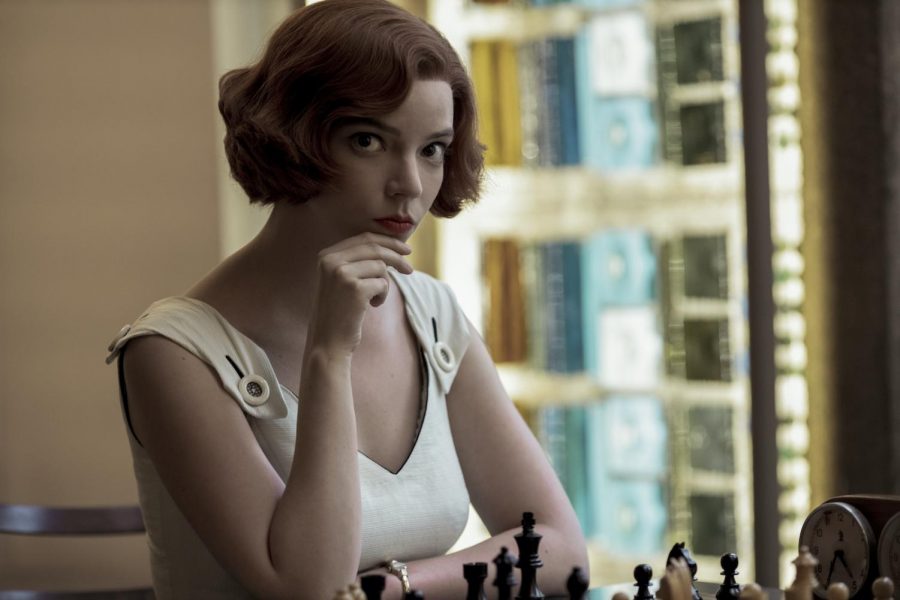Queen’s Gambit makes all the right moves
Checkmate: The Queen’s Gambit, starring Anya Taylor-Joy, set records after its release in October. It is a show for chess-enthusiasts and casual players alike.
Over the course of 393 minutes and seven episodes The Queen’s Gambit follows the childhood and young adulthood of chess prodigy Beth Harmon, and not a minute is wasted.
The Netflix miniseries debuted on October 23 and swept the globe faster than Harmon would defeat her opponents. The show, which stars Anya Taylor-Joy, was created by Scott Frank and Allen Scott and based on a fictional book written by Walter Tevis.
While the show revolves around chess, the game is used as a vessel to propel the story into exploring other topics. You learn very early on that Beth has been orphaned after her mother died in a car crash that she had to experience. This event sets Beth on the path that will lead her to both global fame and many mental battles.
While at the orphanage Beth became reliant on two things to keep her going, playing chess and taking a green pill that acts as a tranquilizer. These pills keep Beth focused on expanding her chess abilities, training relentlessly and constantly playing out games and scenarios in her head. These experiences made her reliant on the drug and all throughout her chess career she would do whatever it takes to try and put herself in that mental state before her matches.
Breaking into the world of chess as a woman in the sixties when the story was set presented even more challenges for Harmon. She was underestimated at every level, which she was able to use to her advantage at points, and compliments of her game would come with qualifiers. The series does a good job of highlighting these struggles early on and might not have explored it enough as Harmon continued to climb the ranks in the chess world.
The relationships that Beth has with the different people she encounters might be the best part about the series. It starts with the impact that being orphaned and growing up relatively alone in unstable environments has on her. Whether it is her adopted mother and father, or any of the people she encounters in the chess world, many enter, leave and re-enter her life throughout the series. Each shift in those relationships influence Beth and push her towards destructive or healthful decisions.
While there are negative overtones throughout much of the series there is a chance for hope at the end. With the help of friends and opponents she has beaten along the way Beth is able to overcome both the number one player in the world and, in this instance, her addiction, when she becomes the world champion completely sober.
It can sometimes get lost that “The Queen’s Gambit” is actually not based on any real story, so the trials and tribulations that Beth does and does not encounter are limitless. While the extremes of some topics are not always represented fully, the range of issues the show manages to portray is impressive. Taylor-Joy’s presence is felt in every scene and she was able to enhance the story, particularly at parts that depicted Beth at her most vulnerable.
You might not learn anything about chess, but you also don’t need to know much about it to enjoy what I will predict to be a future Emmy winning miniseries.
Edited by: Matthew L. Self
Your donation will support the student journalists of Washburn University. Your contribution will allow us to purchase equipment and cover our annual website hosting costs.















